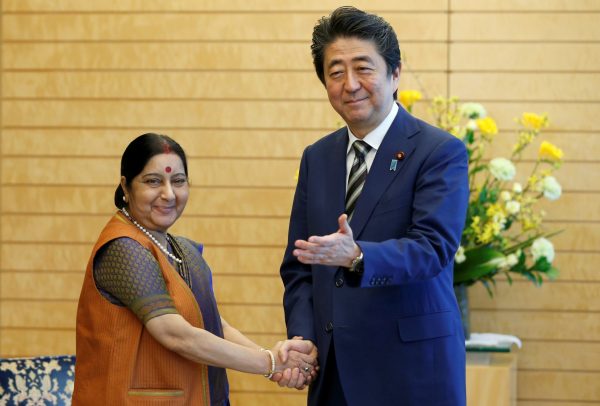Japanese involvement is everywhere in India’s infrastructure projects. The Mumbai subway network, the hugely successful Delhi metro project and the Mumbai–Ahmadabad high-speed railway corridor were all built with Japan International Cooperation Agency (JICA) loans.
The economic complementarity of the investment is hard to miss. Japanese industry’s discovery of India dates back to the 1990s, and Japan is well poised to feed into the rejuvenated demand for engineering and technological capacities in the massive programs like Make in India, Smart Cities and AMRUT. JICA’s loans have built desalination plants in Chennai, sewerage networks in Bangalore and Bhubaneswar, and much larger infrastructure projects like high-speed railways, freight corridors and urban transportation networks. JICA’s presence in India is diverse and reflects a commitment to holistic Indian economic development.
The ODA story is in a sense complemented by the foreign direct investment (FDI) story. Japan is now the third-largest source of FDI to India. FDI inflows jumped from US$1.7 billion in 2013–14 to US$4.7 billion at the end of 2016–17. And the number of Japanese firms in India was up to 1,305 in October 2016.
India has made an effort to encourage such investment from Japan. In her recent visit to Tokyo, India’s Minister of External Affairs Sushma Swaraj invited Japanese corporations to join programs like Smart Cities. Minister of Housing and Urban Affairs Hardeep Singh Puri has similarly pitched investments in India’s impending urban development mega-schemes to Japanese industry in January.
Japan’s economic gains come from the fact that India is a large market with vast infrastructural gaps that need to be plugged in its quest for the next phase of industrial growth. Loan agreements often come with local sourcing clauses, which mean that Japanese firms have a large market to access through soft loans. The plethora of mega-schemes in India offer an unprecedented opportunity for Japanese industry to geographically diversify investments.
The benefits to India are not just infrastructural. Japan’s presence in India, through both ODA and FDI, allows for transfer of skills through spill-over effects or through targeted capacity building efforts by JICA. India can greatly benefit from these, especially at a time when rapid technological progress is fuelling demand for a new set of engineering, management and financial skills.
The economic complementarities run the other way as well. Japan’s economy, which faces labour supply challenges due to its ageing population and falling birth rate, can benefit from India’s young demography. The Japan External Trade Organisation estimates that Japan will have an 800,000-worker shortage of IT staff by 2030. India is well poised to plug this gap, particularly since Japan has eased rules for immigration.
But despite this strong investment relationship and the India–Japan Comprehensive Economic Partnership Agreement, bilateral trade has dipped in recent years. India’s exports have halved to only US$3.9 billion from 2013 to 2017. Bilateral trade totalled US$13.6 billion in 2016–17 — a decrease of 6.21 per cent from the previous year’s figure of US$14.5 billion. While the Agreement covers only a small fraction of total trade, the poor trade numbers are a cause of concern. It is against this backdrop that the Agreement is being renegotiated to enhance India’s exports to Japan.
But Japan–India ties should not be looked at from an economic standpoint alone. In 2014 under prime ministers Narendra Modi and Shinzo Abe, the two countries decided to elevate the bilateral relationship to a ‘special strategic and global partnership’. Since then, bilateral ties have been on a high, particularly with JICA’s consistent funding support to India’s growth story. Strong India–Japan relations also allow both countries to counterbalance China, with whom both India and Japan (ironically) enjoy much bigger trade relations. Japan has exhorted India as its ‘most important partner’ in Japan’s ‘Free and Open Indo-Pacific Strategy’. At the same time, India has struck a strategic tone by underlining the two countries’ shared democracies and their ‘respect [for] openness, rule of law, sovereignty and territorial integrity’.
With the relationship ranging from sharing joint platforms for maritime exercises to strong investment cooperation and efforts at people-to-people links, Japan–India ties represent a strategic relationship that stands formidably in the Asia Pacific.
Geethanjali Nataraj is Professor of Economics at the Indian Institute of Public Administration (IIPA).
Abhirup Bhunia is a development consultant in New Dehli.

